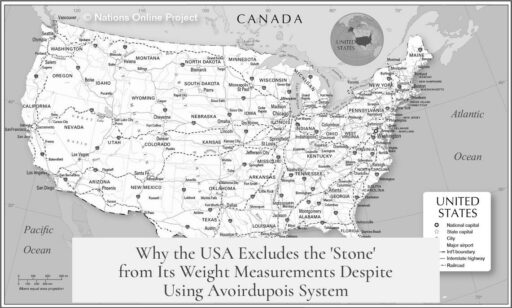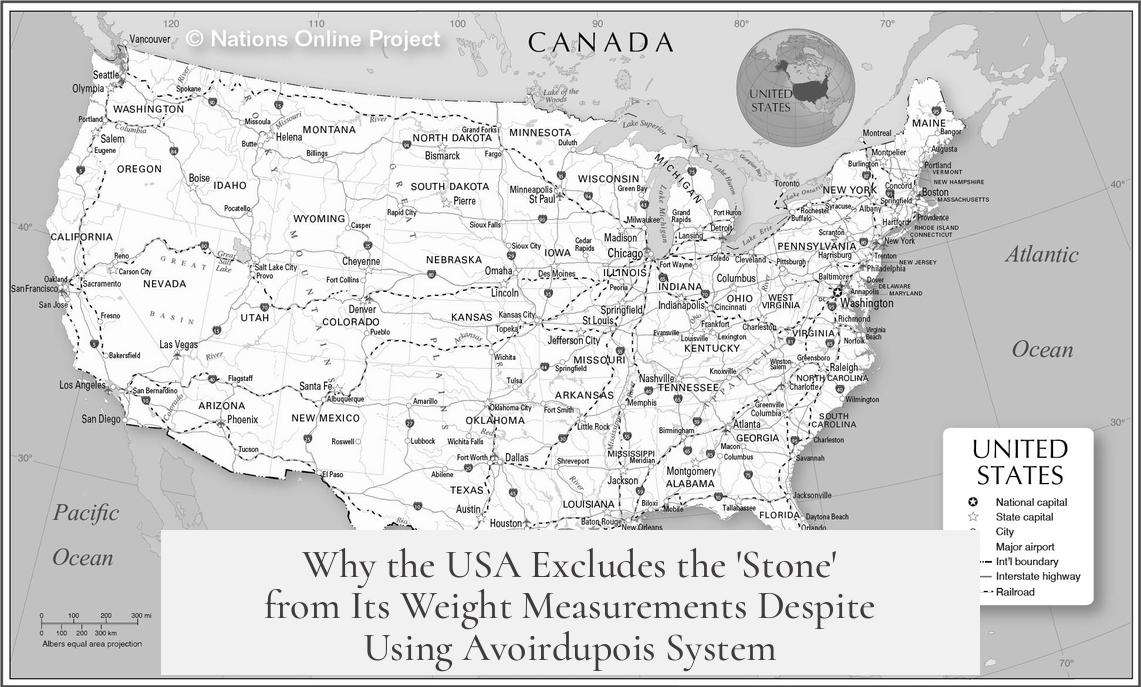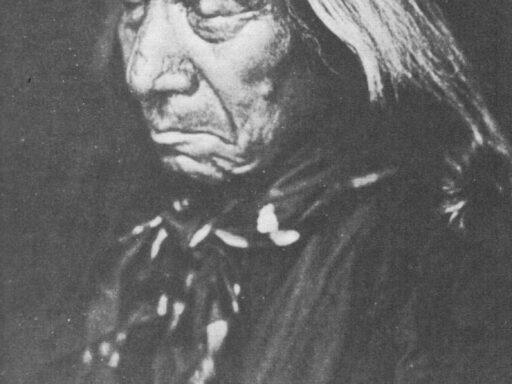The USA does not use the ‘stone’ as a weight measure because it was added to the UK Imperial system after American independence, and the U.S. instead uses the U.S. Customary System, a variant of an earlier British avoirdupois system without the stone.
The stone equals 14 pounds or about 6.35 kilograms. Although it sounds like an ancient measure, the stone became a formal unit in the UK Imperial system only in 1824. By that time, the United States had already declared independence from Britain in 1776 and was developing its own measurement system.
The U.S. Customary System derives from the British avoirdupois system used before the Imperial system was formalized. The earlier British system included pounds, ounces, and other weights but did not officially include the stone. Consequently, the USA never adopted the stone as a formal unit of weight.
People often mistakenly call the U.S. weights and measures the “Imperial system.” However, this is inaccurate. The Imperial system is the British system established officially in the 19th century, which includes the stone. The U.S. system has roots in the earlier British avoirdupois system but evolved separately.
Today, the stone remains a unit primarily used in the United Kingdom and Ireland. It is especially common in describing human body weight. Outside those countries, especially in the U.S., the stone holds no practical use and is rarely, if ever, recognized.
| Key Reason | Details |
|---|---|
| Timing of Adoption | Stone added to UK system after U.S. independence |
| System Differences | U.S. Customary System is pre-Imperial British avoirdupois variant |
| Misconception | U.S. system is not truly Imperial system |
| Modern Use | Stone mainly used in UK and Ireland only |
In summary, the lack of ‘stone’ usage in the United States stems from historical timing and system evolution. The U.S. never incorporated the stone because it was not part of the measurement system existing at independence. The U.S. relies on pounds, ounces, and other customary units instead.
- The stone unit entered the British Imperial system post-1824, after U.S. independence.
- The U.S. system is a separate, earlier version of British avoirdupois without the stone.
- The term “Imperial system” does not accurately describe U.S. customary measures.
- The stone is used only in the UK and Ireland today, not in the U.S.
Why doesn’t the USA use the ‘stone’ as a weight measure, even though we use the rest of the Avoirdupois system?
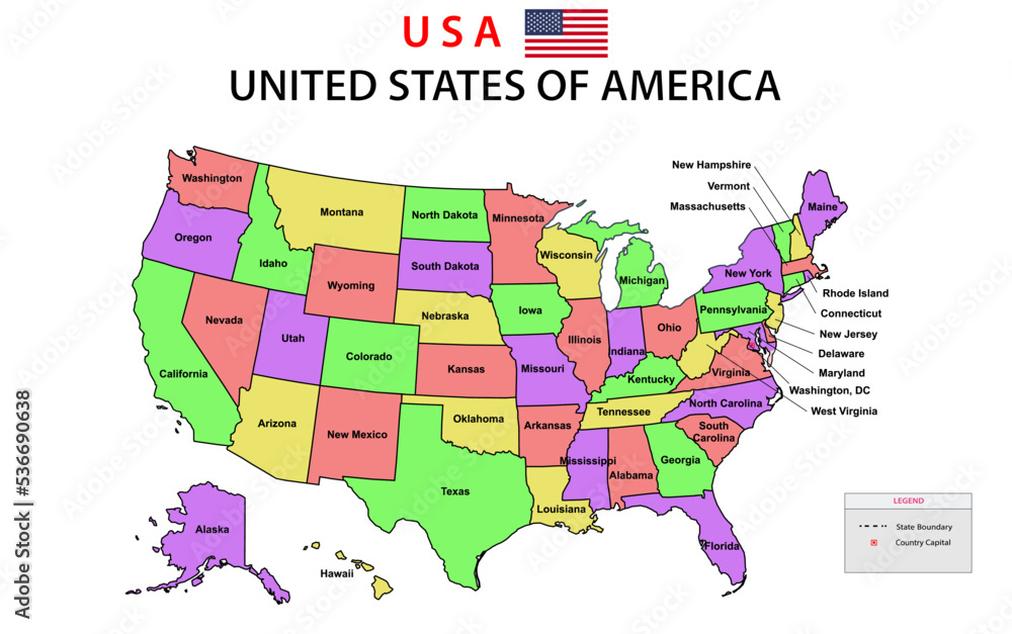
The USA does not use the ‘stone’ as a weight measure because the stone was formally added to the UK’s Imperial system in 1824, after the United States had already gained independence and established its own U.S. Customary System—a variant of the earlier British avoirdupois system that lacked the stone unit.
Sounds simple enough, right? But dive a little deeper, and it’s clear why the stone didn’t cross the Atlantic and hang around in American kitchens or weighing scales. Let’s unpack this fascinating historical and practical tale.
The stone is a quirky unit of weight equal to 14 pounds (around 6.35 kilograms). It feels ancient—as if it’s been tied to our history since the dawn of time. Yet, despite popular belief, the stone was only formally woven into the UK’s official Imperial weights and measures in 1824.
Now here’s the kicker: the United States declared independence from Great Britain way back in 1776. That means when the British standardized their system with the stone, America was already charting a different course.
To put it simply, the U.S. missed the stone boat. Instead, the U.S. stuck to what it inherited earlier: the British avoirdupois system as it existed *before* 1824, and never adopted the newer units the British formalized later.
Imagine Britain adding a new spice to the recipe after the Americans had left the kitchen. America continued cooking their own dish with the original ingredients. Hence, no stone in the American pantry.
The U.S. Customary System vs. British Imperial: Not Exactly the Same Family
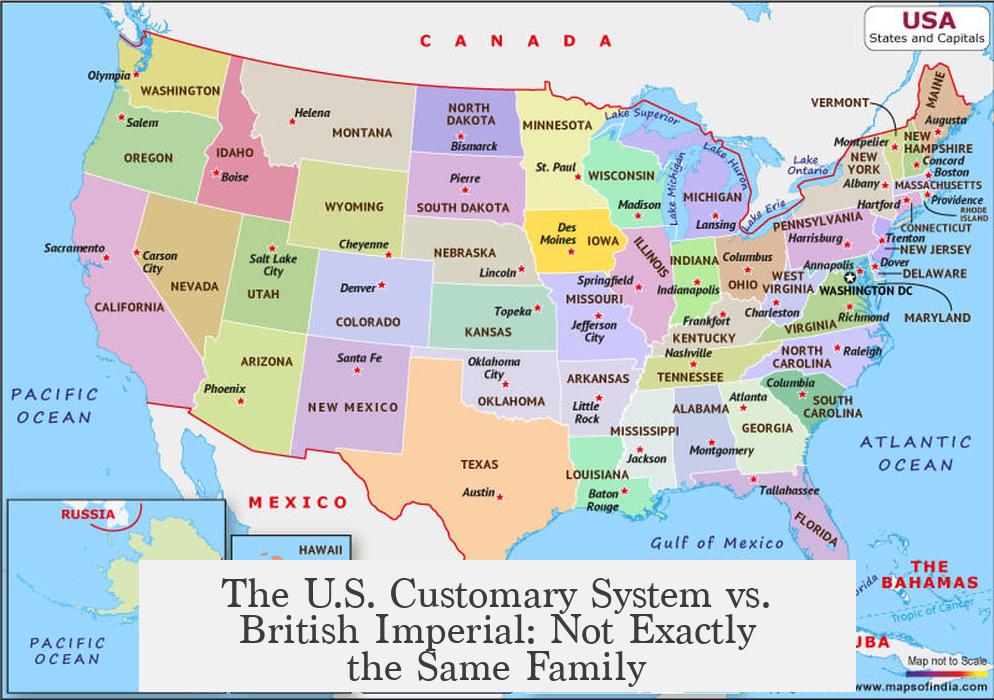
People often say America uses the “Imperial system.” That’s not quite right. Calling the U.S. system “Imperial” is like calling a Mustang a “Ford Crown Victoria” because they both have four wheels. Both American and British systems share many unit names and bases—but differ in details, history, and adoption timelines.
The U.S. Customary System is better viewed as a branch from an earlier British avoirdupois root, not an offshoot of the 1824 Imperial system that introduced the stone. While both use pounds, ounces, and tons, the stone remains a family member strictly in the UK and Ireland.
For Americans, pounds are king. Need to measure body weight? Your doctor’s scale shows pounds, not stones and pounds. The “stone” hardly registers. It’s like a foreign celebrity in a local parade.
Is the Stone Unit Still a Thing?
Yes, but only in select spots. Today, the stone as 14 pounds lives primarily in the UK and Ireland. It’s common in Britain for people to say, “I weigh 11 stone 4,” which translates to 158 pounds. For Americans, this sounds like code or a math test.
The stone is not recognized or used officially or colloquially in the United States. You’re unlikely to find it in American grocery stores, sports broadcasts, or weather reports.
This limits confusion in the U.S., where the pound reigns supreme and is well understood by everyone from schoolkids to chefs and engineers alike.
Why Does It Matter That the Stone Was Added After U.S. Independence?
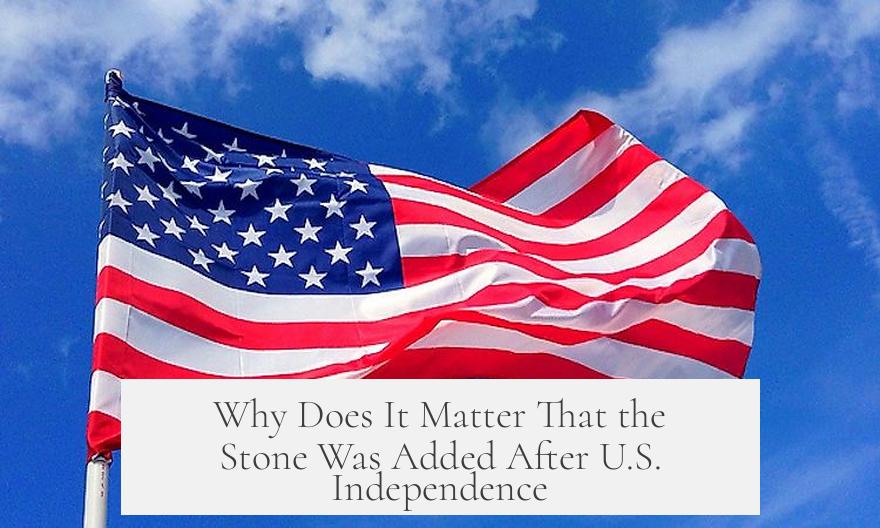
This timing is crucial. In historical measurement systems, adoption depended heavily on political and administrative decisions at specific moments. The U.S. developed its own set of standards from the British system as it stood around 1776.
The stone, officially added to British Imperial weights decades later, simply didn’t cross paths with the American approach. Although the U.S. and UK systems seem similar, they evolved differently with each side adding or dropping units as needed.
Imagine two siblings who grew up in the same house but moved out at different times. Each brings different sets of tools with them. The older sibling (UK) later acquires a special tool (the stone), but the younger sibling (U.S.) never does.
What Can We Learn from This Weighty Tale?
- Historical context matters: Measurement systems are shaped by politics and time.
- Terminology Accuracy: Calling the U.S. system “Imperial” oversimplifies and misrepresents history.
- Cultural identity: Units like the stone can become part of national identity, making change slow and rare.
- Simplicity wins: The U.S. sticking to pounds simplifies commerce, communication, and education.
For anyone fascinated by measurement curiosities or history, the stone’s absence from American units is a neat footnote with layers of meaning. It’s a reminder that measurement systems are not just about numbers—they’re about heritage, politics, and practicalities unified in a worldwide patchwork quilt.
Next time you hear someone say they weigh “12 stone,” you’ll know it’s not just old-fashioned. It’s a system that America politely declined decades ago. Meanwhile, the pound soldier marches on, unfazed and unstoned.
So, next time you pick up a scale in the U.S., remember: it’s pounds for show, pounds for go, and—except for a few history buffs—the stone doesn’t get a foot in the door.
Why doesn’t the USA use the stone as a weight measure?
The stone was officially added to the UK Imperial system in 1824, after the U.S. had gained independence. The U.S. system developed separately and never adopted the stone as a unit of weight.
Is the U.S. measurement system the same as the British Imperial system?
Not exactly. The U.S. Customary System is a variant of an earlier British avoirdupois system. It shares many unit names but does not include the stone, which is unique to the later British Imperial system.
Where is the stone unit commonly used today?
The stone is mainly used in the UK and Ireland. It is not in common use anywhere else, including the U.S., where it is mostly unknown.
Why is the stone not recognized or used in the U.S.?
The stone was introduced after U.S. independence, so it was never part of the U.S. customary units. Americans have no tradition or official use of the stone as a weight measure.
